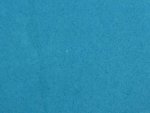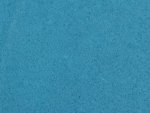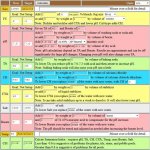Hi everyone, as usual let me thank you in advance for your replies,,,your help here has been priceless!
HISTORY:
-Purchased home w/pool in Mar 17. As far as I can tell pool was redone relatively not long ago...gonna guess '07-'10 l-ish.
-Took control of pool w/TFP June 17
-Pool has been incredibly stable since then, pool had some scaling on walls prior to me taking it over but nothing major (approx 6-8 instances approx 3-4" long by 1/16-1/8" high)
-Scaling has pretty much disappeared BUT etching has been happening and getting worse and is leaving "holes" on the pool floor-see pics.
TESTING: (TF100) 10/1/17 @8:45am
FC=5.5 (floats from 7ppm in am after adding 24oz LC to 5.5 pm =daily FC loss of 1.5ppm...was 3ppm during peak summer months)
CC=0
TC=5.5
PH=7.8 (usually 7.7, have made zero adjustments here in 2 months)
TA=60 (found my pools happy place, again no adjustment in months)
CH= 425 raised from 200ppm at time of takeover, adding 50ppm per week hoping to stop etching!
CYA= 40 (was 120 at takeover, drained pool 40% reduced to 70ppm then slowly stabilized at 40
These numbers have been incredibly stable since mid July and the only modifications I have been making is the daily dose of liq chlorine and the addition of calcium as I raised it in hopes of stopping the etching.
NOTE: During initial takeover in June and early July I was running FC a little higher l, between 10-13 range, then dropped to 7-10 range now at 5-7ppm range. CH was down to 175 for a week or two after draining pool.
Pool has been crystal clear since with no issues other than the etching!
QUESTIONS:
- Could the higher FC levels have caused this? But it is still happening now that FC is 5-7ppm
- Should I continue to raise the CH levels?
- How high can I bring CH? At the higher levels over 300 I have seen zero scaling BUT etching continues.
- 500?, 600? Is it safe? Will it stop the etching?
- Should I crank up the CSI? CSI has NEVER been below -.15 and is mostly in the -1 to 1 range, usually close to 0. I'm assuming neg is going towards etching and pos is towards scaling?
- Am I missing something? Is something else causing this that I'm not understanding?
Sorry for so many questions, I guess bottom line is how do I stop this? LOL
Thanks again!!!
Jim D
EDIT: Plz note second pic is just showing clarity of water
HISTORY:
-Purchased home w/pool in Mar 17. As far as I can tell pool was redone relatively not long ago...gonna guess '07-'10 l-ish.
-Took control of pool w/TFP June 17
-Pool has been incredibly stable since then, pool had some scaling on walls prior to me taking it over but nothing major (approx 6-8 instances approx 3-4" long by 1/16-1/8" high)
-Scaling has pretty much disappeared BUT etching has been happening and getting worse and is leaving "holes" on the pool floor-see pics.
TESTING: (TF100) 10/1/17 @8:45am
FC=5.5 (floats from 7ppm in am after adding 24oz LC to 5.5 pm =daily FC loss of 1.5ppm...was 3ppm during peak summer months)
CC=0
TC=5.5
PH=7.8 (usually 7.7, have made zero adjustments here in 2 months)
TA=60 (found my pools happy place, again no adjustment in months)
CH= 425 raised from 200ppm at time of takeover, adding 50ppm per week hoping to stop etching!
CYA= 40 (was 120 at takeover, drained pool 40% reduced to 70ppm then slowly stabilized at 40
These numbers have been incredibly stable since mid July and the only modifications I have been making is the daily dose of liq chlorine and the addition of calcium as I raised it in hopes of stopping the etching.
NOTE: During initial takeover in June and early July I was running FC a little higher l, between 10-13 range, then dropped to 7-10 range now at 5-7ppm range. CH was down to 175 for a week or two after draining pool.
Pool has been crystal clear since with no issues other than the etching!
QUESTIONS:
- Could the higher FC levels have caused this? But it is still happening now that FC is 5-7ppm
- Should I continue to raise the CH levels?
- How high can I bring CH? At the higher levels over 300 I have seen zero scaling BUT etching continues.
- 500?, 600? Is it safe? Will it stop the etching?
- Should I crank up the CSI? CSI has NEVER been below -.15 and is mostly in the -1 to 1 range, usually close to 0. I'm assuming neg is going towards etching and pos is towards scaling?
- Am I missing something? Is something else causing this that I'm not understanding?
Sorry for so many questions, I guess bottom line is how do I stop this? LOL
Thanks again!!!
Jim D
EDIT: Plz note second pic is just showing clarity of water




